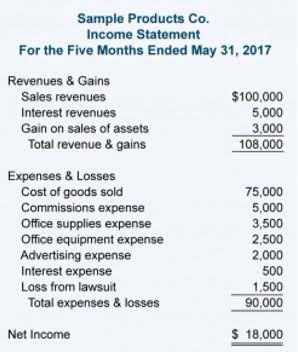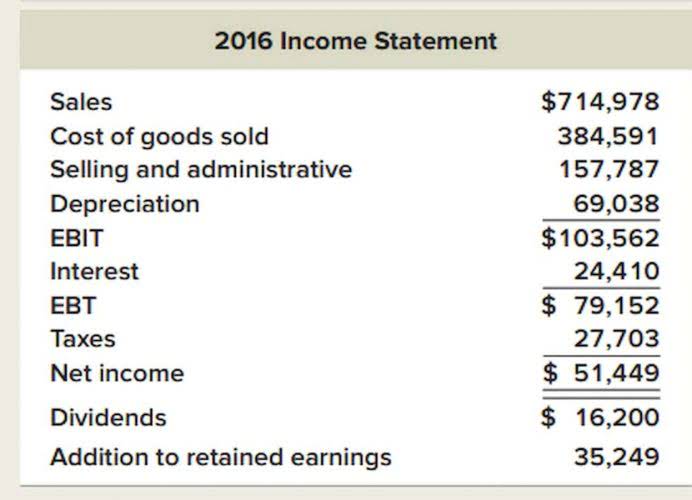And the balance sheet is prepared to disclose the company’s financial affairs to external stakeholders. Both the balance sheet and trial balance provide insights into a company’s financial status by summarizing its assets, liabilities, and equity. Trial balance is also a part of the double-entry bookkeeping system, but it is prepared in columnar format with debit balances in the left column and credit balances in the right column. Due to this fact, a balance sheet is also referred to as “Statement of financial position”. This financial statement pertains to a particular date which is usually the accounting period’s last date.
HighRadius offers a cloud-based Record to Report solution that helps accounting professionals streamline and automate the financial close process for businesses. We have helped accounting teams from around the globe with month-end closing, reconciliations, journal entry management, intercompany accounting, and financial reporting. Take the pain out of generating the trial balance and balance sheets using an intelligent business accounting software such as TallyPrime.
- With Taxfyle, your firm can access licensed CPAs and EAs who can prepare and review tax returns for your clients.
- For a more thorough overview of your assets and liabilities, including taxes, loans, mortgages, and accounts payable, you may also enlarge the report.
- A balance sheet is mandatory to be prepared by law and to complete the accounting cycle.
- If you’ve followed the steps correctly, this should be a quick and straightforward process.
- Accountants can download the spreadsheet template from the close software that’s pre-configured to the existing format.
In the journal entry system, you need to record the debit and credit accounts properly. It’s easy to record amounts in the wrong column or under the wrong account. Even a small mistake can throw off your entire trial balance, wasting time trying to find and fix the error. If you use double-entry accounting, every transaction has two parts—a debit and a credit—which should always balance.
TAX RETURN SERVICES
A balance sheet can only be made when all accrual entries (prepaid and outstanding) have been adjusted. This concludes the topic of “difference between trial balance and ledger”. To read about more such interesting concepts on Commerce, stay tuned to BYJU’S. A Balance Sheet is a statement which shows the liabilities, assets and shareholder’s equity of the enterprise.
It is constructed based on the accounting standards described in one of the accounting frameworks, such as Generally Accepted Accounting Principles or International Financial Reporting Standards. A balance sheet is a type of financial statement that shows the state of a business’s finances at a certain moment in time. The balance sheet displays a firm’s assets, liabilities, and equity, providing an overview of what the company owns, owes, and investors’ ownership stake. A typical document for external financial reporting, the balance sheet provides information about the stability and health of the company’s finances.
A trial balance is not mandatory to be prepared according to the law. It is a statement that shows a detailed listing of assets, liabilities, and capital demonstrating the financial condition of a company on a given date. Balance Sheet is like a mirror of the business as it shows the status of the company at a particular date, in just one glance. It reflects the assets – what the company owns, and liabilities – what the company does.
What is the key difference between the trial balance and a balance sheet?
In conclusion, the balance sheet and trial balance are important financial statements used in accounting. While they both serve different purposes, they are critical in accurately presenting a company’s financial position. The balance sheet shows a company’s assets, liabilities, and equity at a particular time, while the trial balance is used to ensure the accuracy of the general ledger. Understanding the differences between these two statements is essential for anyone working in accounting and finance.
What is the difference between a trial balance and a balance sheet?
The trial balance is an internal tool for checking whether accounts are balanced. In contrast, the balance sheet is a key financial statement that provides a snapshot of a company’s overall economic health. A trial balance is a worksheet used in bookkeeping, that lists the ending balance in all ledger accounts as of a specific point in time (usually as of month-end). It is integrated into most accounting software and used within the accounting department and a source document by the company’s auditors. A business can issue a balance sheet either for internal management use or for external stakeholders like investors and lenders. Balance sheets, especially those of public companies must comply with accounting standards like GAAP (Generally Accepted Accounting Principles) or Internal Financial Reporting Standards (IFRS).
Such adjustments are relevant only for the particular accounting year. Trial balance also helps in the comparative analysis with a previous year’s balances and the current one. It is a very important part of the financial statements and financial accounts. The total of assets, liabilities and stockholders equity are displayed in an ideal format of a balance sheet. The AI algorithm continuously learns through a feedback loop which, in turn, reduces false anomalies. We empower accounting teams to work more efficiently, accurately, and collaboratively, enabling them to add greater value to their organizations’ accounting processes.
The purpose of preparing a trial balance is to ascertain the accuracy of the books of accounts. A trial balance is prepared to identify any numerical errors that may have taken place in the double-entry accounting system. Also, the auditors’ signature is essential on it in the case of companies. As against, the preparation of Trial Balance is not compulsory at all.
The trial balance, as a source for identifying errors in recording transactions, identifies missing entries or mathematical mistakes. Accounting and bookkeeping professionals use a trial balance to check a company’s financial records. While modern accounting software helps reduce errors, trial balances are still valuable for internal reviews. The trial balance, on the other hand, is a listing of all the accounts in the general ledger and their respective balances. The trial balance aims to ensure that the total debits in the ledger equal the total credits.
How to Create a Trial Balance in 5 Steps
- If they don’t, that’s your cue to find and fix the error before you prepare financial statements or face an audit.
- Be it a small startup or a large enterprise, accurate financial reporting relies heavily on understanding key accounting components..
- By following the formula of debit and credit, we can approach this transaction.
- In this article, we’ll examine the differences between the balance sheet and trial balance.
These differences between trial balance vs balance sheet or balance of the different general ledgers needs reconciliation. The signature of an auditor is required to verify the accuracy of the closing balance of the different assets of the company. Preparing a trial balance is an essential step in the accounting process. It serves as a snapshot of the financial standing of a company at the end of an accounting period. This ensures that the double entry accounting system is well-maintained.
So, it would be an addition of $10,000 to the cash item on the asset side of the balance sheet. It would also add $10,000 to the debt item on the what is the difference between a trial balance and a balance sheet liabilities side. This is a simplistic illustration of how a balance sheet gets balanced.
The books of accounts would then have to be examined to trace the source of the error. This would then be rectified so that the trial balance is perfectly balanced. Trial balances are recorded for every month or quarter so that any errors in the accounting records can be identified and corrected as soon as possible. It is an excellent way of internally keeping an eye on the accurate recording of all accounting transactions. It is the most straightforward method of detecting any wrong or improper entries made in the books of accounts.
The trial balance is an internal accounting report that lists all ledger accounts and their balances at a specific point in time. Its main purpose is to ensure that the total debits equal the total credits, maintaining the integrity of financial records. A trial balance lists closing balances from all general ledgers at a specific date. A balance sheet on the other hand uses the adjusted trial balance as a source to summarize the financial position at the end of an accounting period.






























